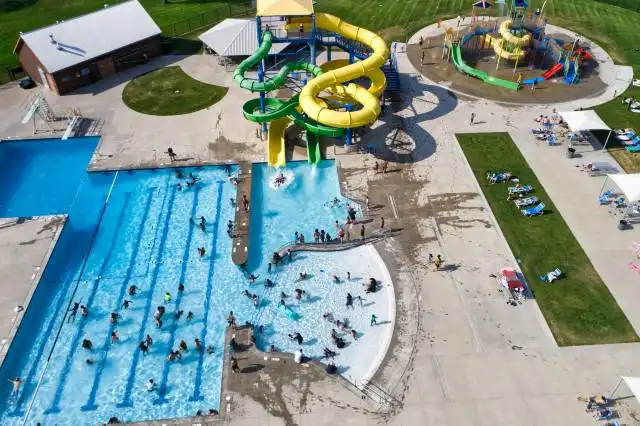Start a Dinner Theatre
Concocting a Feast for the Senses: The Magic of Dinner Theatre
| Updated


DINNER THEATRE
Ladies and Gentlemen, raise a glass to Dinner Theatre, where Broadway meets the appetizer course! This exciting business model caters to patrons who adore both gourmet food and excellent performances. Imagine orchestrating an enchanting evening where folks sip wine and dine on exquisite meals, all while being thoroughly entertained by a theatrical play or musical right before their eyes. Your Dinner Theatre does exactly this - dishes out a feast for both the stomach and the soul, melding the culinary and performing arts into a superlative entertaining experience.
Jump to Business Plan
RELATED BUSINESS IDEAS
Browse ALL Music & Entertainment Ventures Business Ideas
Discover Your Perfect Domain
Unlock the door to your online success with our hand-picked selection of premium domain names. Whether you're starting a new venture or rebranding an existing one, the right domain can set the tone for your digital presence. Browse through our curated list, each with its unique potential to enhance your brand's visibility and credibility.
DINNER THEATRE MINI BUSINESS PLAN
This a quick reality check to help you identify the strengths and weaknesses of your business concept before you dive in.
Business Idea: Dinner Theatre
Expected Percent Margin:
- Gross Margin: 30-40% (after Direct Costs)
- Net Profit Margin: 10-15% (after all Expenses)
Earnings Expectations:
- Daily Earnings: $1,500 - $2,500
- Weekly Earnings: $10,500 - $17,500
- Monthly Earnings: $45,000 - $75,000
- Annual Earnings: $540,000 - $900,000
Actions to Hit Those Numbers:
Talent Acquisition and Management:
- Auditions: Host regular auditions to find the best performers.
- Staff Requirement: Acquire staff for both the restaurant and theatre sections.
Food and Beverage:
- Food Costs: Should aim not to exceed 30-35% of the restaurant's total revenue.
- Menu Planning: Offer a selection of dinner options based on your target market's preference.
Marketing and Customer Acquisition:
- Social Media: Utilize platforms like Instagram and Facebook, highlighting featured performances and food specials.
- Local marketing: Collaborate with local businesses for cross-promotion.
Sales and Customer Experience:
- Pricing: Price your tickets to cover the costs including performance, meals, and a profit margin.
- Gift Vouchers: Offer gift vouchers for special occasions.
- Membership Passes: Provide exclusive benefits with annual membership passes.
Cost Control:
- Rent or Lease: Wisely choose the location keeping the footprint, ease of access, and lease agreement.
- Costs: Keep an eye on operating costs including utilities, maintenance.
Business Operations:
- Opening Hours: Consider Dinner hours and weekend matinees.
- Transaction Volume: Need to attract a sizeable audience regularly. Combine your restaurant with theatre offering.
These numbers are generalized estimations and can vary depending on factors like location, business execution, pricing strategy, and others. Going for a tailored analysis with an expert or financial advisor would yield more accurate results.
NOT WHAT YOU HAD IN MIND? Here are more ideas



Browse ALL Music & Entertainment Ventures Business Ideas
Grab Your Business Website Name
Before you get caught up in the whirlwind of setting up your business, invest in a domain name. It's a small but significant step that lays the foundation for your brand and makes it easier for customers to find and trust you. Just like you wouldn't build a house without securing the land first, don't build a business without securing your domain name.
"Why? Can't that wait?" Here's why it shouldn't
Step 1: Determine if Starting a Dinner Theatre is Right for You
Breakdown of Startup Expenses
When considering starting a dinner theatre, it is important to understand the costs associated with the venture. Startup expenses include the cost of renting or purchasing a venue, purchasing equipment, hiring staff, and advertising. Depending on the size of the theatre, the cost of renting or purchasing a venue can range from a few thousand dollars to hundreds of thousands of dollars. Additionally, equipment such as chairs, tables, and sound systems can cost several thousand dollars. Hiring staff such as actors, directors, and technicians can also be costly. Finally, advertising costs can range from a few hundred dollars to several thousand dollars.
Breakdown of Ongoing Expenses
In addition to startup expenses, it is important to consider ongoing expenses when starting a dinner theatre. These expenses include the cost of maintaining the venue, paying staff, and purchasing supplies. The cost of maintaining the venue can include rent, utilities, and repairs. Paying staff such as actors, directors, and technicians can also be costly. Finally, purchasing supplies such as food, drinks, and props can also be expensive.
Examples of Ways to Make Money
When starting a dinner theatre, it is important to consider ways to make money. One way to make money is to charge admission for performances. Additionally, dinner theatres can also make money by selling food and drinks at performances. Finally, dinner theatres can also make money by renting out their venue for events such as weddings and corporate functions.
Step 2: Name the Business
When choosing a name for a dinner theatre, it is important to consider the type of business you are running. For example, if you are running a dinner theatre that focuses on comedy, you may want to include a humorous element in the name. Additionally, it is important to make sure the name is easy to remember and pronounce. Additionally, it is important to make sure the name is not already taken by another business. To do this, it is important to research state and federal trademark databases to make sure the name is not already taken.
It is also important to consider the potential for branding when choosing a name. The name should be memorable and should reflect the type of business you are running. Additionally, it is important to consider the potential for a website or social media presence when choosing a name. The name should be easy to spell and should be easy to remember.
Finally, it is important to consider the potential for a logo when choosing a name. A logo should be simple and should reflect the type of business you are running. Additionally, it is important to make sure the logo is easy to recognize and remember. Additionally, it is important to make sure the logo is not already taken by another business. To do this, it is important to research state and federal trademark databases to make sure the logo is not already taken.
Step 3: Secure Financing
Sources of Financing
When starting a dinner theatre, it is important to secure financing to cover the startup and ongoing expenses. Sources of financing can include personal savings, loans from family and friends, small business loans, and crowdfunding. It is important to research the different types of financing available to determine which is best suited for the business.
Tips on Securing Financing
When seeking financing for a dinner theatre, it is important to have a business plan in place. This should include a breakdown of startup expenses and ongoing expenses, as well as a plan for generating revenue. Additionally, it is important to have a good credit score and to be prepared to provide financial statements and other documents to potential lenders. It is also important to shop around for the best rate and terms when seeking financing. Finally, it is important to be aware of the risks associated with taking on debt and to make sure to read all of the fine print before signing any loan documents.
Step 4: Secure a Location
Finding the right location for a dinner theatre is essential for success. The location should be easily accessible, have adequate parking, and be large enough to accommodate the size of the theatre and the number of guests. It should also be in a safe area and have a good reputation. Additionally, the location should be in a place that is conducive to the type of performance that will be held. For example, if the theatre will be hosting musicals, it should be located in an area that is known for its music scene.
Leasing vs. Buying
When it comes to securing a location, there are two main options: leasing or buying. Leasing is usually the more cost-effective option, as it allows the business to avoid large upfront costs. However, it may also be more restrictive in terms of the length of the lease and the ability to make changes to the space. Buying a location may be more expensive, but it allows for more freedom in terms of making changes and allows the business to build equity in the property.
Securing Financing
Once the right location has been found, the next step is to secure financing for the purchase or lease. This may require taking out a loan or seeking investors. It is important to research the different financing options available and determine which one is the best fit for the business. Additionally, it is important to ensure that the financing is secured before signing any contracts.
Negotiating the Contract
Once the financing is secured, the next step is to negotiate the contract for the purchase or lease. This should include a detailed breakdown of the terms and conditions, including the length of the lease, the monthly payments, and any restrictions on the use of the space. It is important to ensure that all of the terms and conditions are clearly outlined in the contract and that the business is not agreeing to anything that could be detrimental in the future.
Step 5: Obtain Licenses and Permits
Before starting a dinner theatre, it is important to understand the licenses and permits needed to legally operate the business. Depending on the state, these may include a business license, a liquor license, a food service license, and a health permit. It is important to research the specific requirements for the state in which the business will operate.
Process for Obtaining Licenses and Permits
Once the necessary licenses and permits have been identified, the process of obtaining them can begin. This process can vary depending on the state, but typically involves submitting an application, paying any applicable fees, and providing proof of insurance. In some cases, a background check may also be required. It is important to allow plenty of time for the application process, as it can take several weeks or even months to obtain the necessary licenses and permits.
Cost of Licenses and Permits
The cost of licenses and permits can vary greatly depending on the state and the type of business. For example, a liquor license may cost several thousand dollars, while a business license may cost a few hundred dollars. It is important to research the cost of each license or permit and factor it into the overall startup expenses.
Ongoing Requirements
Once the necessary licenses and permits have been obtained, there may be ongoing requirements to maintain them. These requirements may include submitting annual paperwork, paying annual fees, and providing proof of insurance. It is important to understand the ongoing requirements for each license or permit and make sure they are met in order to avoid any penalties or fines.
Step 6: Hire Employees
When it comes to hiring employees, it is important to be selective. Start by creating a job description that outlines the duties and responsibilities of the position. Then, create a list of qualifications and skills that the ideal candidate should possess. After that, post the job listing on job boards, social media, and other relevant websites. Once you have received applications, review them and select the best candidates for an interview. During the interview, ask questions that will help you determine if the candidate is the right fit for the job.
Training Employees
Once you have hired the right employees, it is important to provide them with the necessary training. This should include a comprehensive overview of the job duties and expectations. Additionally, provide them with information about the company, its policies, and its procedures. It is also important to provide them with safety training, as well as any other training that is specific to their job role. After the initial training, it is important to provide ongoing training and development opportunities to ensure that they are up to date with the latest industry trends.
Benefits and Compensation
When it comes to hiring employees, it is important to provide them with competitive benefits and compensation. This should include a competitive salary, health insurance, vacation time, and other benefits. Additionally, it is important to offer incentives such as bonuses and raises to reward employees for their hard work and dedication. This will help to ensure that your employees are motivated and engaged in their work.
Employee Policies
Finally, it is important to create and implement employee policies. These policies should include information about attendance, dress code, and other relevant topics. Additionally, it is important to create a policy that outlines the disciplinary actions that will be taken if an employee violates any of the policies. This will help to ensure that your employees are aware of the expectations and that they are held accountable for their actions.
Step 7: Set Up the Theatre
Setting up a dinner theatre requires a lot of work and planning. The first step is to determine the size and type of theatre you want to create. Consider the size of the space you have available and the number of people you can accommodate. You should also consider the type of seating you will need, such as tables and chairs, booths, or a combination of both. Additionally, you will need to consider the type of stage you will need and the size of the stage. You may also need to consider the type of lighting and sound equipment you will need.
Create a Budget
Once you have determined the size and type of theatre you want to create, you should create a budget. This budget should include all of the costs associated with setting up the theatre, such as the cost of the space, the cost of the seating, the cost of the stage, the cost of the lighting and sound equipment, and any other costs associated with setting up the theatre. Additionally, you should consider the cost of any renovations you may need to make to the space, such as painting, carpeting, or any other renovations you may need to make.
Hire a Team
Once you have created a budget, you should begin to hire a team to help you set up the theatre. This team should include a stage manager, a lighting and sound technician, and any other personnel you may need to help you set up the theatre. Additionally, you may need to hire a contractor to help with any renovations you may need to make to the space.
Purchase Supplies
Once you have hired a team, you should begin to purchase the supplies you need to set up the theatre. This should include any seating, stage, lighting, and sound equipment you may need. Additionally, you should purchase any other supplies you may need, such as curtains, props, and any other items you may need to set up the theatre.
Set Up the Theatre
Once you have purchased the supplies you need, you should begin to set up the theatre. This should include setting up the seating, the stage, the lighting, and the sound equipment. Additionally, you should make any renovations you may need to make to the space and set up any props or curtains you may need. Once the theatre is set up, you should test the equipment to make sure everything is working properly.
Step 8: Market the Theatre
When it comes to marketing the dinner theatre, it is important to think outside the box. Traditional marketing techniques such as print ads, radio and television spots, and online advertising are all effective methods for getting the word out about the theatre. Additionally, word-of-mouth marketing is a great way to get people talking about the theatre. Consider offering discounts or promotions to customers who refer friends and family to the theatre. Additionally, consider partnering with local businesses to create cross-promotional opportunities. Finally, social media is a great way to reach a wide audience and build a loyal following.
Step 9: Monitor and Adjust
Tips on Monitoring and Adjusting
It is important to monitor the success of the dinner theatre and make adjustments as needed. Keep track of ticket sales and customer feedback to determine what is working and what needs to be improved. Additionally, consider surveying customers to get their feedback on the overall experience. This can help to identify areas for improvement and help to ensure that customers are having the best experience possible. Additionally, consider adjusting the menu and entertainment offerings to keep things fresh and interesting. Finally, it is important to stay up-to-date on industry trends and adjust the theatre accordingly.
Step 9: Open the Theatre
Opening a dinner theatre can be a daunting task, but with the right preparation and planning, it can be a successful endeavor. Before opening the theatre, it is important to make sure that all of the necessary permits and licenses have been obtained. Additionally, it is important to have a plan for marketing the theatre, including a website and social media presence. It is also important to have a plan for staffing the theatre, including hiring actors, technicians, and other personnel. Finally, it is important to have a plan for the opening night, including a plan for ticket sales, food and beverage sales, and other activities.
Tips on Promoting the Theatre
Once the theatre is open, it is important to promote the theatre and its events. This can be done through traditional methods such as newspaper and radio ads, as well as through more modern methods such as social media and email campaigns. Additionally, it is important to create partnerships with local businesses and organizations, as well as to create relationships with local media outlets. It is also important to create a loyalty program for customers, as well as to create special events and promotions to draw in new customers. Finally, it is important to create a website and social media presence to promote the theatre and its events.
EXPLORE MORE CATEGORIES
Browse ALL Business Idea Categories
TAKE THE NEXT STEPS









